Lake trout cooking preparation for people who don’t think they like it
One question I get asked on a weekly basis is “how should I cook my catch?” One comment I often hear when I ask clients if they plan on keeping fish is that “I don’t care for lake trout, so let’s just catch and release fish today.”
Let’s start with the second question first. And let me preface this by saying that I don’t recall having ever eaten Great Lakes lake trout or lakers from the Adirondacks either. Adirondack fish should taste great. I would expect Lake Ontario fish circa 2021 to be very good too, but going back to the late 1880s, people liked Finger Lakes lake trout better than those from Lake Ontario. I have an old article to prove it! (See the book “Fishing North American Waters 1888”.) I have eaten them from most of the Finger Lakes as well as from Alaska. Generally speaking, when properly prepared from the lake to the table, I consider them excellent table fare. Yes – excellent. I do like Landlocked Salmon, browns and rainbows better, but not that much better. I think all these species are somewhat in the same “ballpark.” They are all oily fish that eat a lot of alewives.
There are three main reasons a lot of anglers in the Finger Lakes don’t like lake trout. Or I should say, there are three main causes of lake trout being spoiled or doomed before they even make it to the table.
#1.) Fish are not put on ice immediately after catching them. I just saw three nice lakers on a stringer at Taughannock this morning. The water temp on the surface was 70 degrees. By the end of the day that angler will be able to poke their finger right through the skin and into the flesh of the fish. It will be spoiled ROTTEN. You wouldn’t put steak out in 80 degree weather and just let it fester for 8 hours before cooking it. You wouldn’t hang a deer up in 80 degree weather either! I’d hope not. Non-oily fish like walleyes can handle being kept in warm water. I don’t recommend it. But a lot of people unfortunately need “spoil-proof” fish. They just are clueless when it comes to taking care of their catch.
#2.) People freeze their catch for too long. Lake trout is best eaten fresh – as are most fish. Freeze them for months and they will often turn rancid in the freezer. I have had this happen. Oily fish generally do not fare well frozen for long. And yes, I get guys who claim to have kept lake trout for a year frozen in water or vacuum sealed, but I wouldn’t recommend it.
3.) People do not remove the dark meat along the skin of the fish (along the lateral line) before cooking it. The dark meat has an “insipid flavor.” It’s not bitter or sour, but it tastes “off.” It doesn’t taste good and it will ruin your entire experience of eating a nice lake trout. Cut out ALL of the dark meat before frying the fish. If you are grilling it with the skin on or smoking it, just don’t eat that stuff. It will come off easily with a fork. Think of it as gristle or fat and you’ll be good to go.
Here is a fool proof way to prepare Finger Lakes lake trout. If you like fish, there’s a 99% chance you will really enjoy this recipe after following the preparation instructions. I learned this stuff back in 1997 from Jim Haviland, who used to fish the lake a lot. He owned “Kidder’s Landing” – a restaurant I worked at for a summer when I first moved down here in 1995. Guys at his bar hated lake trout but liked the “silver fish,” so Jim would serve them his lake trout and tell them they were brown trout as he watched his patrons gobble down plate after plate of trout. Only after they finished eating the fish would he tell them that they were eating lakers! Not everything below is exactly how Jim did it, but it’s close enough and I have to give him the credit here.
First thing to do is fillet the fish after you bled it out and iced it in your cooler onboard. I generally fillet fish leaving the rib cage in, so the next thing to do is use a sharp fillet knife and cut along the edge of the ribcage, removing it.
"Field Dressed Fillet" ready to prepare for table
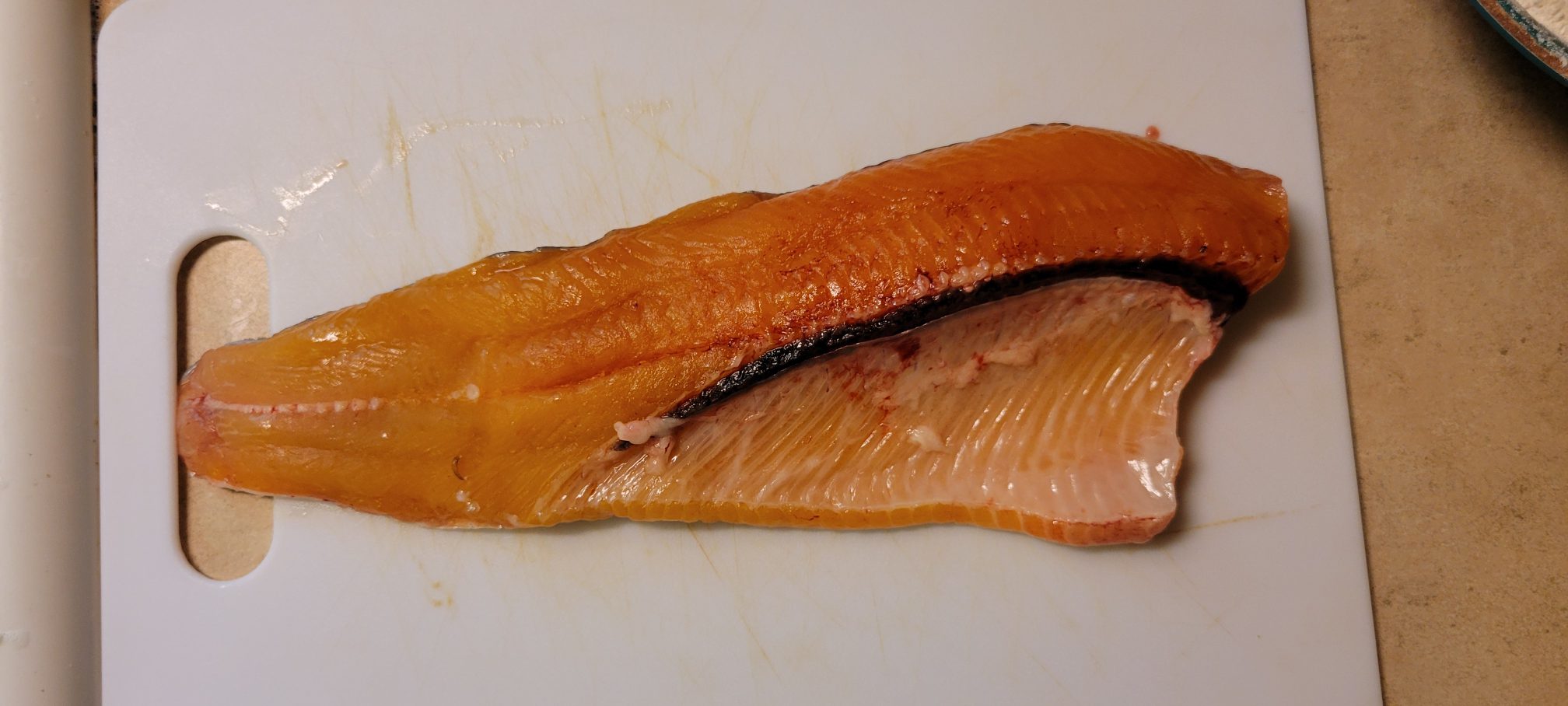
Cut out the ribcage
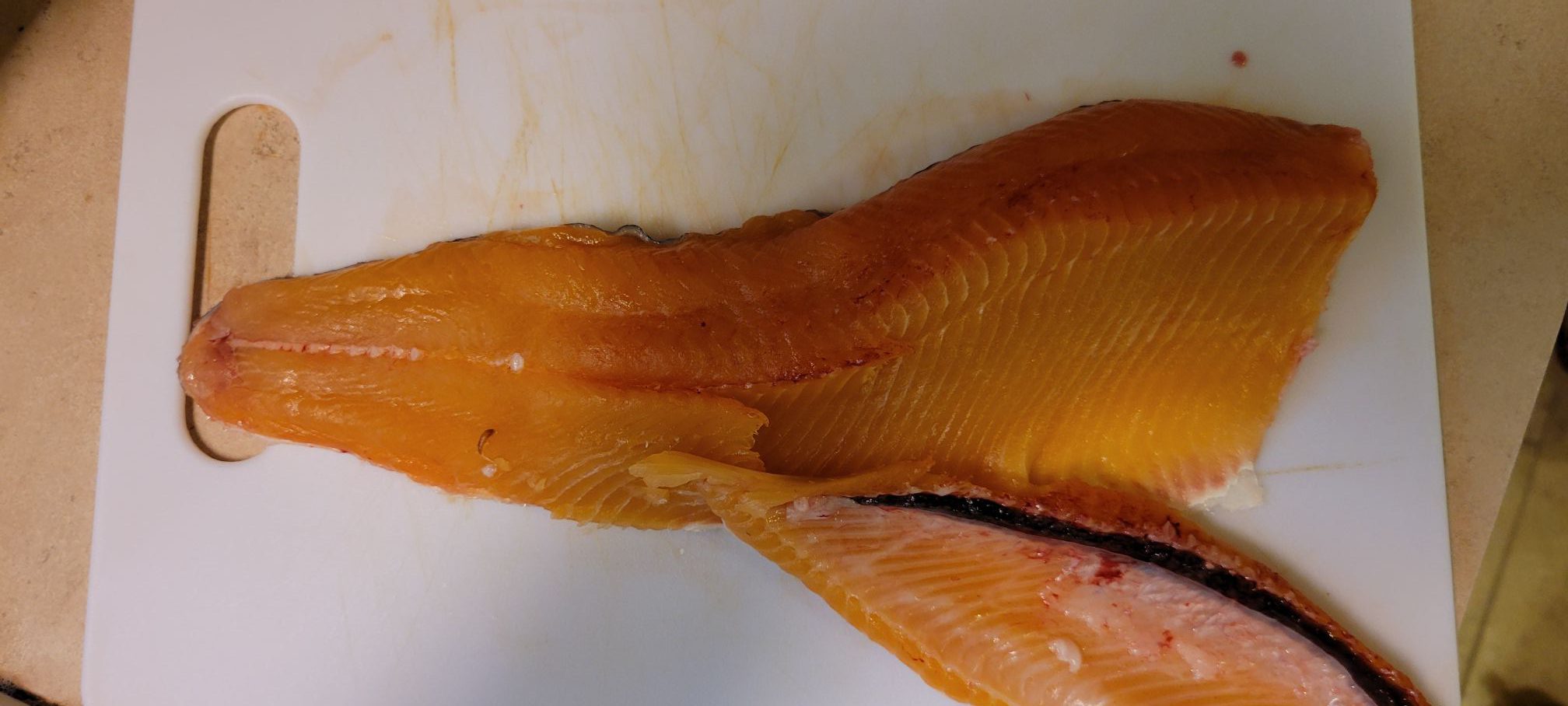
After this, we are going to skin the fish. Jim liked to angle his fillet knife parallel to the fillet, instead of angling towards the skin. This does waste meat, but what it does is removes the vast majority of the lateral line quickly and easily. If you don’t want to waste meat, go right along the skin but keep in mind you’ll have a lot more trimming to do.
Jim told me that people would say “you’re wasting a lot of meat!” Jim would reply – it’s ok, I have a bunch more trout! I’d rather waste some meat filleting the fish, than waste 95% of the fillet because someone doesn’t like the off taste and tosses the whole fillet out. So figure out what works best for you.
Skinning the fish so dark meat is mostly removed

You could always salvage some of the meat against the skin and use it for fish cakes or something else if you want.
Notice how you now have a very narrow “column” of dark lateral line/skin meat. Now just cut it out with a “V” cut and discard it.
Cut out remainder of lateral line
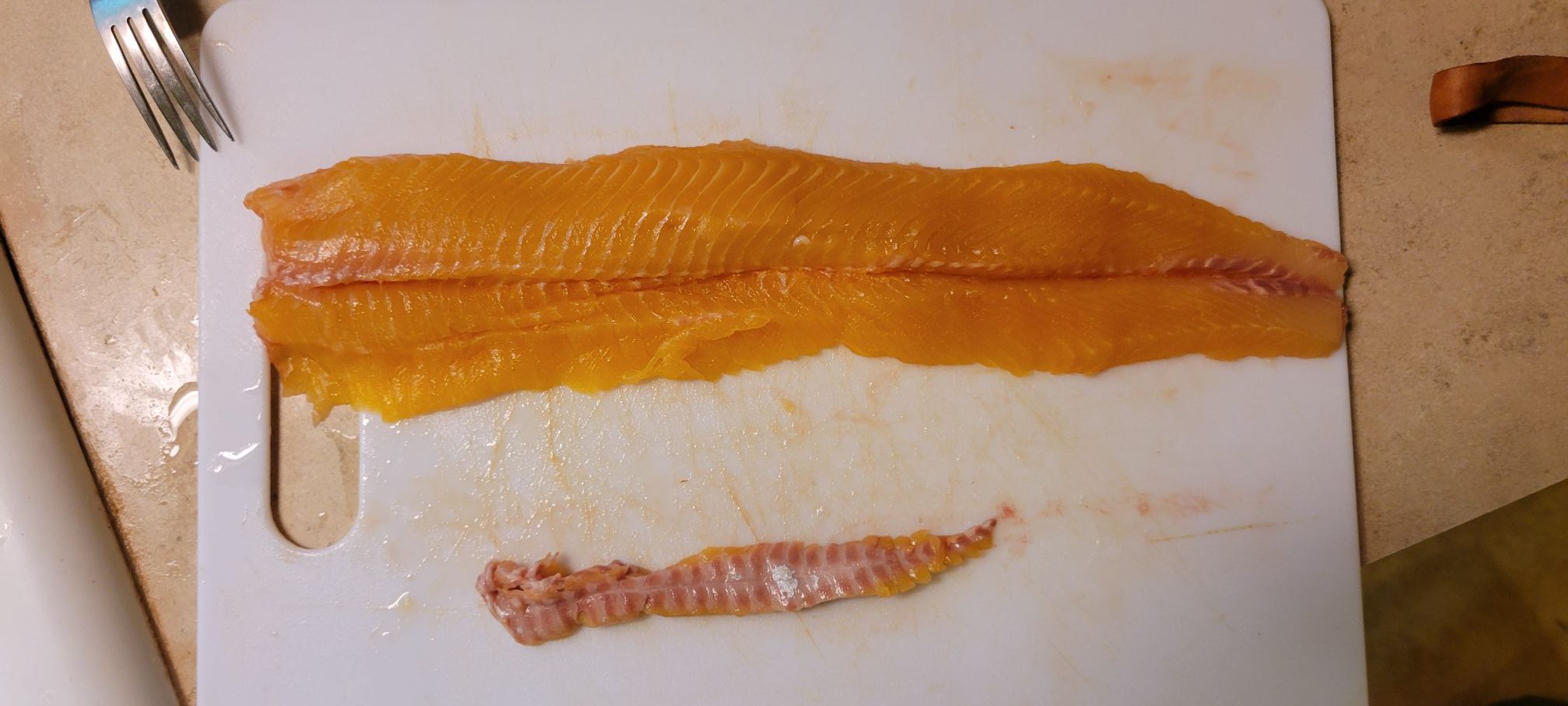
Jim was adamant about never soaking the fillet in water. He recommended just wiping off the blood with paper towel. If you get fish $hit on the fillet, I would do a quick rinse. I don’t think that hurts anything.
Patting down/wiping off the blood
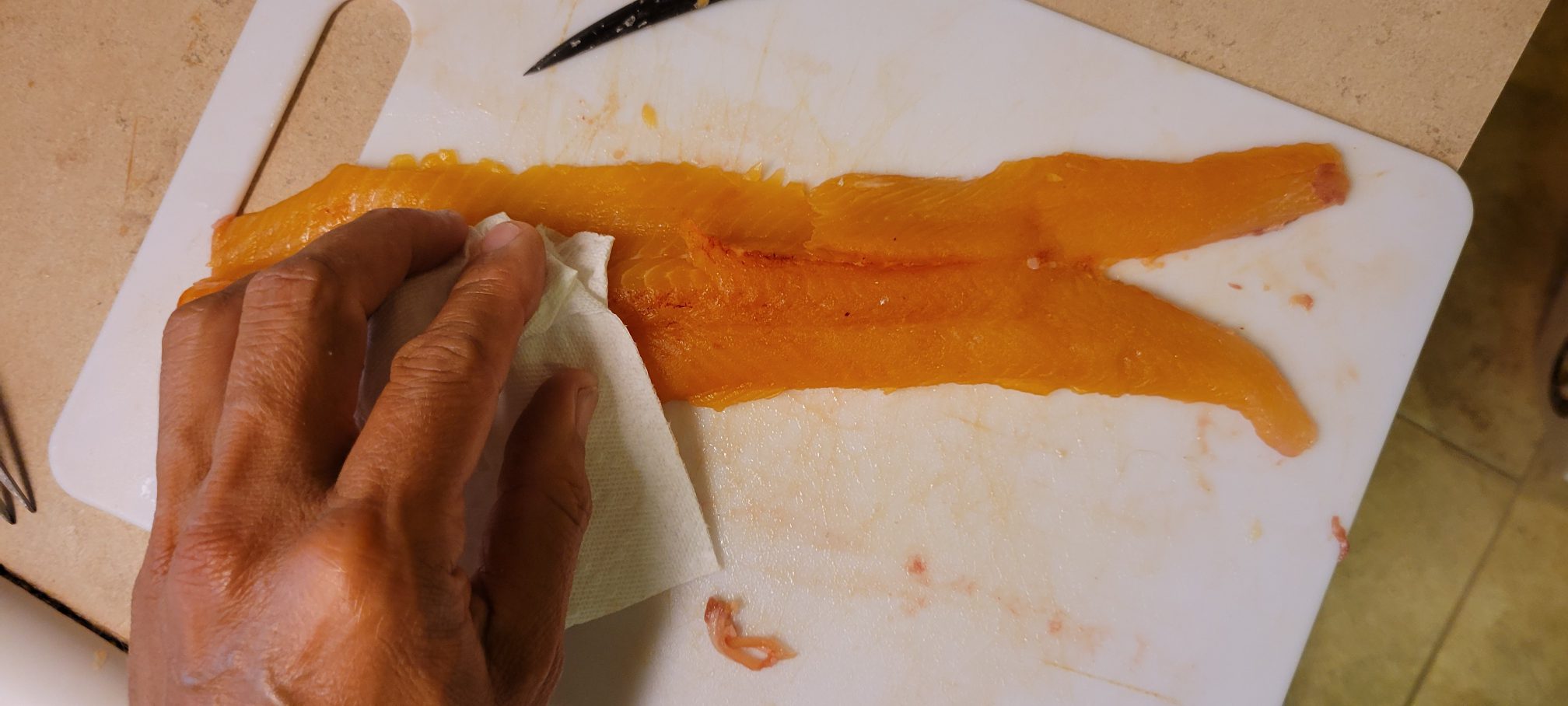
Now you are ready to cut the fish fillet into manageable sized (easily cooked) pieces. Dredge the pieces in plain old white flour. No need for any milk/egg wash – the oil of the fish makes them tacky enough!
Cut up and ready to dredge!

I should mention, you’ll also want to cut out any fatty deposits, like the kind that occurs just below a fin. Also cut out any calcium/bone that was left on the fillet as you filleted along the backbone. Do this before you cut up the fish.
In the flour!
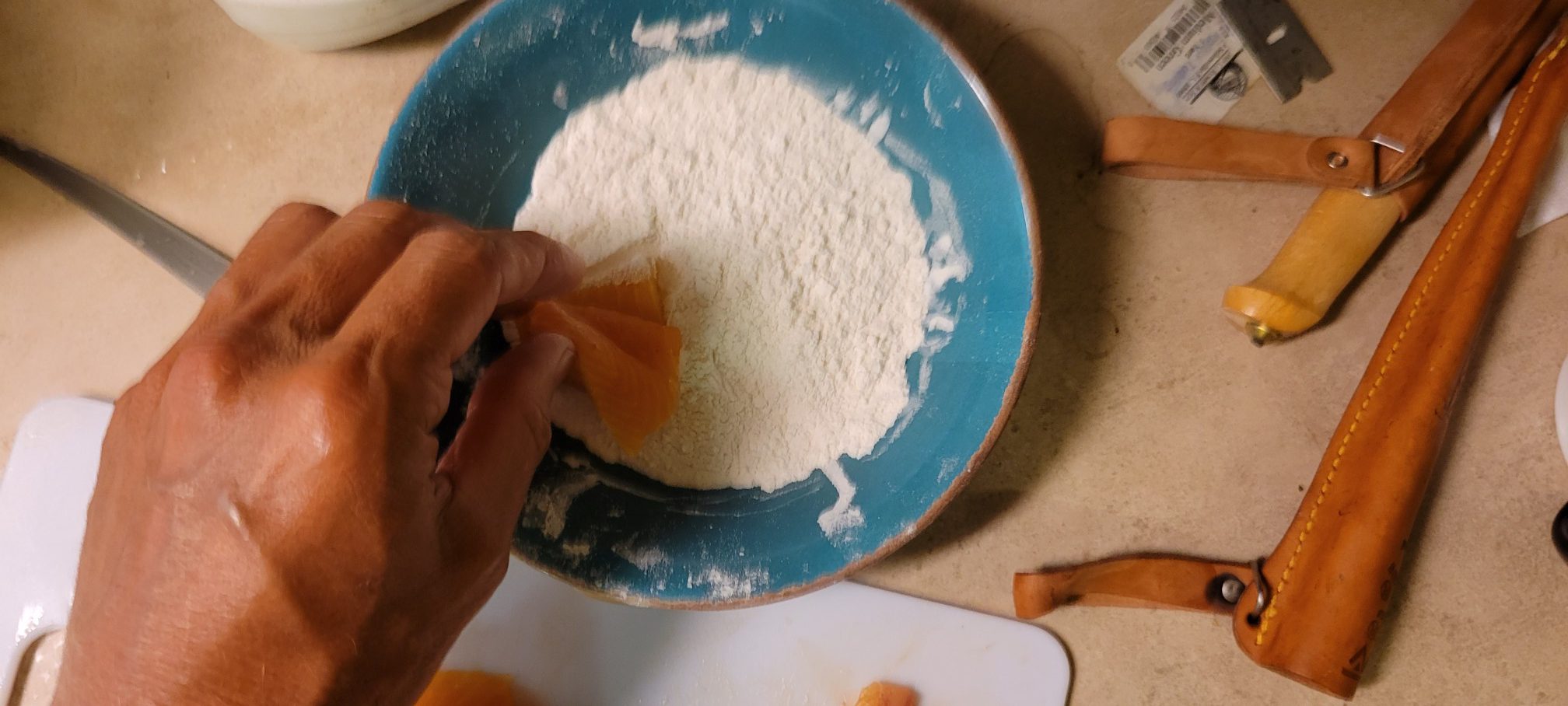
In terms of your oil, I use vegetable oil but you can use whatever you want. The oil should be hot enough so that the fish are “surprised” a bit – they sizzle when added to the pan. You don’t want the fish to just sit in the oil with no sizzle! On the other hand – if the pieces curl up right away, the oil is too hot and your fish will likely get over cooked.
Fry 'em up!
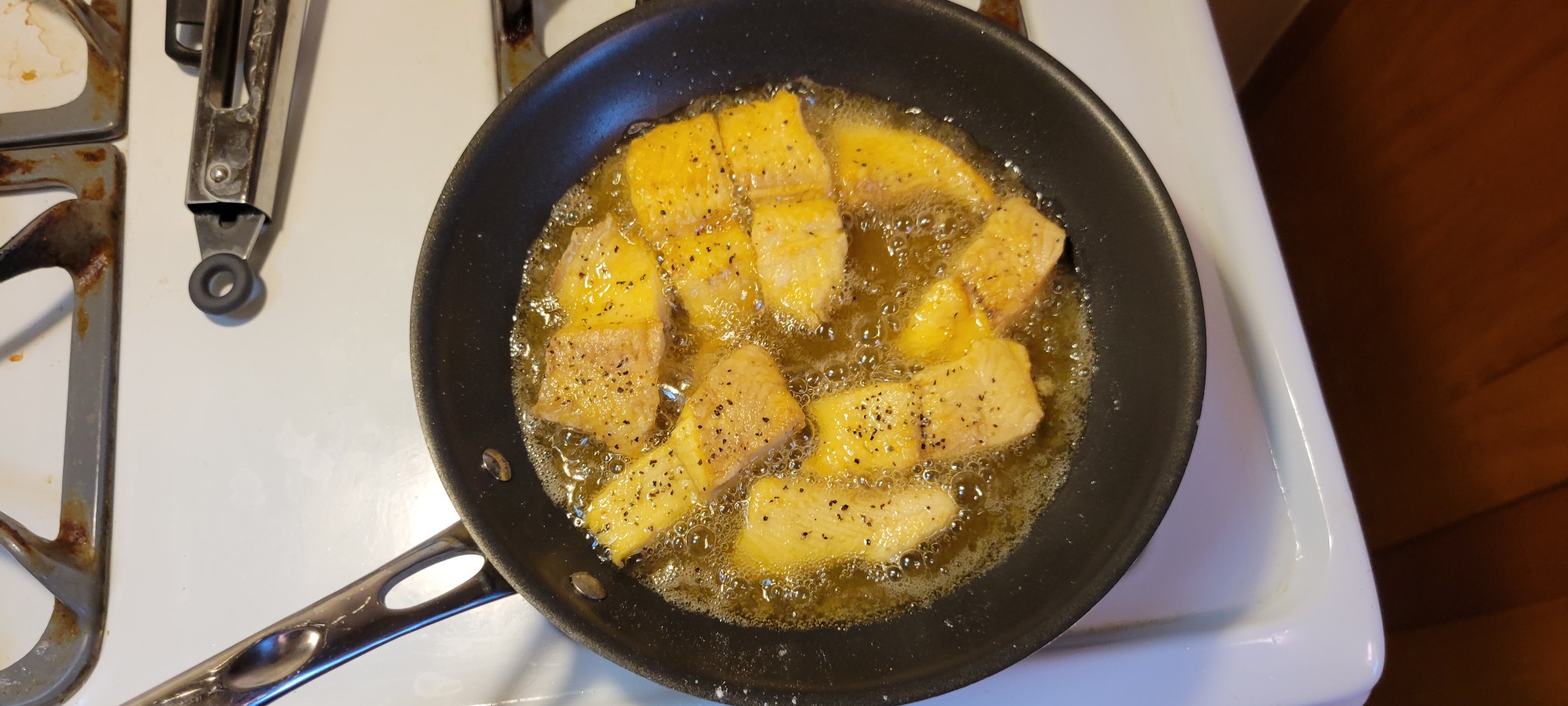
Sprinkle in some salt and pepper to taste
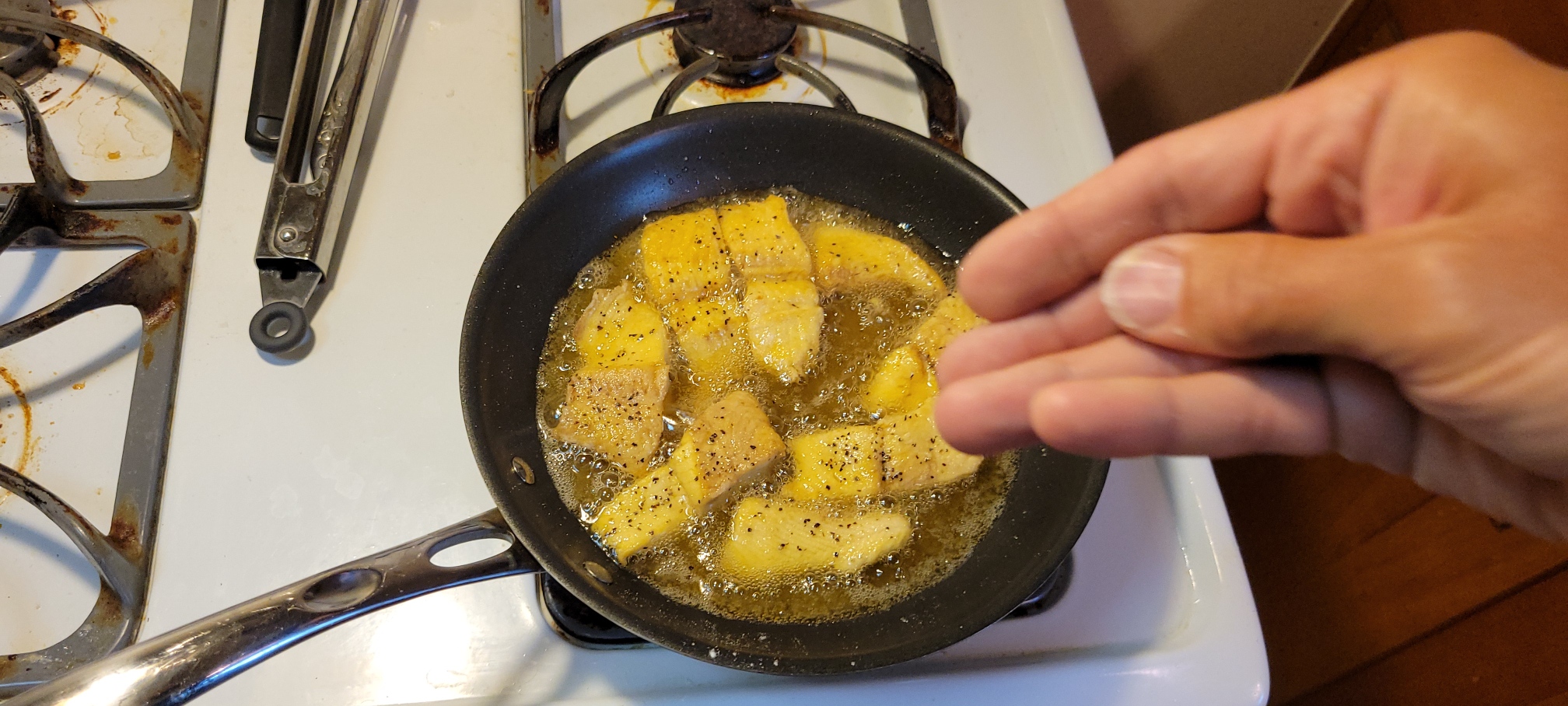
This fish was a 22″ laker. I cooked it on one side for 2 minutes and then the other side for just over a minute. That was all and it was done to perfection! You’ll have to experiment with fish size and cooking time. For a large fish, just cut the pieces to a smaller size.
Remove from oil, pat down and enjoy! I like some lemon with my fish....
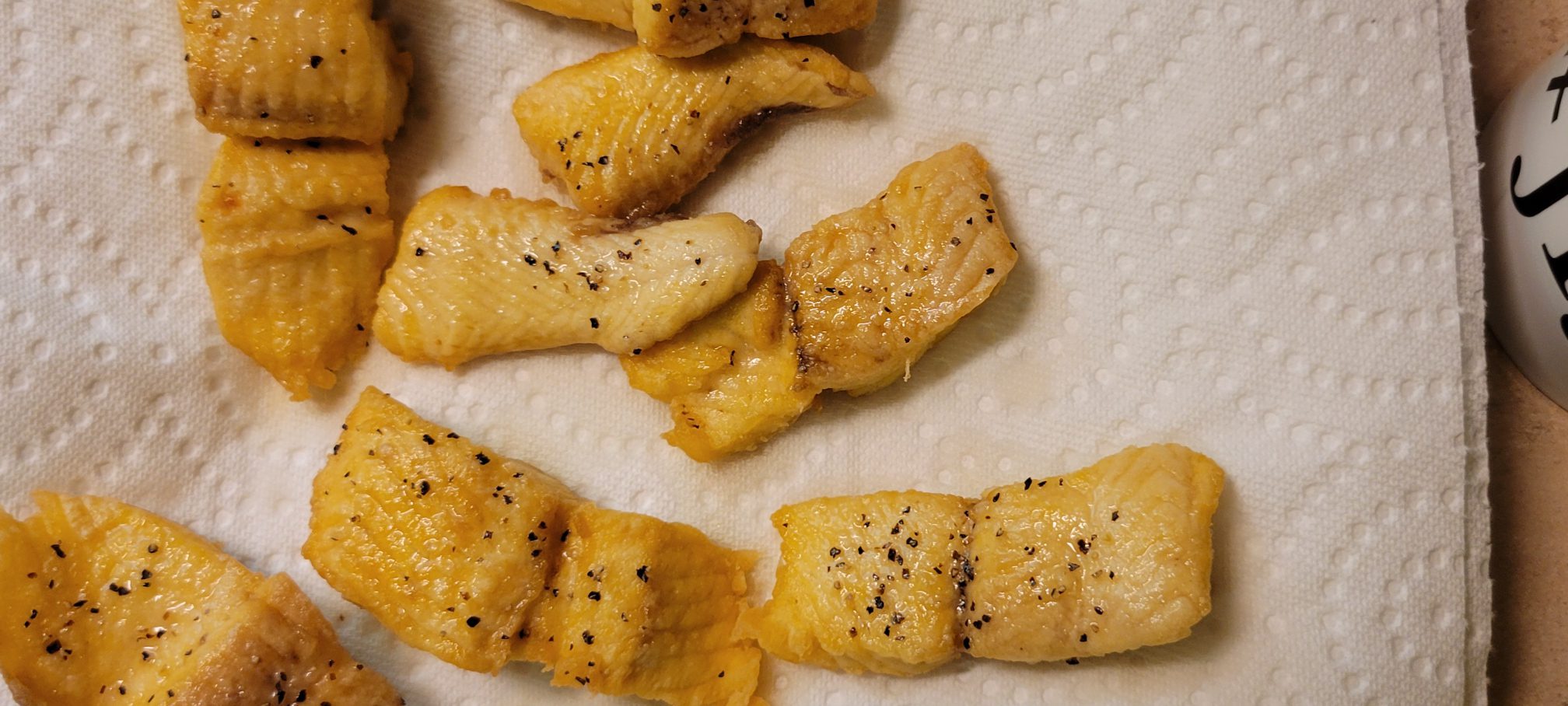
How did it turn out? It was fantastic! If you don’t like lake trout, or had a bad experience with them, think about trying to prepare it this way. I think you’ll have a change of heart!
